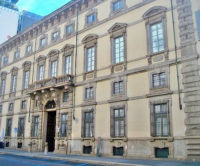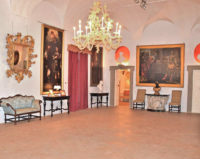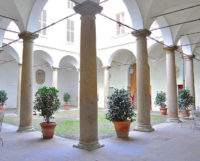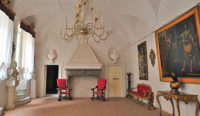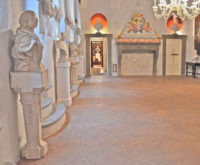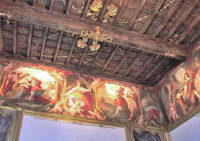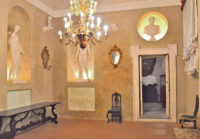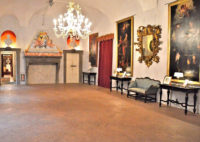Palazzo Durini’s story begins with the Durini family, an aristocratic lineage with deep roots in Milan’s social and political fabric. The family’s prominence can be traced back to the 14th century when they held influential positions in the city’s administration.
The palace we see today was built between the late 16th and early 17th centuries. Designed by the renowned architect Francesco Maria Richini, Palazzo Durini blends Italian Renaissance and Baroque styles, creating a harmonious and visually stunning result.
Over the centuries, Palazzo Durini has witnessed numerous historical events, including hosting distinguished guests like Napoleon Bonaparte. Ownership of the palace has changed hands several times, from the Durini family to the aristocratic Serbelloni family, and later to the municipality of Milan.
Palazzo Durini Today
Uses and Functions: Today, Palazzo Durini serves various functions, including hosting cultural events, conferences, and private celebrations. Additionally, the palace is home to the Durini Foundation, a non-profit organization dedicated to preserving the building’s artistic heritage and promoting cultural exchange.
The Art Collection: Palazzo Durini houses an exquisite art collection, featuring works by renowned Italian artists such as Gian Battista Tiepolo and Cesare Procaccini. The paintings and sculptures on display are a testament to the palace’s rich artistic history, providing visitors with a visual feast to admire.
Exploring Palazzo Durini
The Courtyard and Gardens: A visit to Palazzo Durini begins with its enchanting courtyard and gardens. With meticulously manicured lawns, fragrant flower beds, and elegant fountains, this serene oasis offers a respite from the bustling city life outside.
The Main Hall: The palace’s main hall is a true masterpiece, featuring frescoes, gilded moldings, and ornate chandeliers. The room’s sumptuous decor and lavish furnishings evoke the opulence and splendor of bygone eras.
The Durini Library: Another highlight of the palace is the Durini Library, which houses an impressive collection of books, manuscripts, and historical documents. The library’s shelves are a treasure trove of knowledge, offering a glimpse into Milan’s rich literary and intellectual heritage.
The Chapel: Palazzo Durini’s private chapel, adorned with frescoes and intricate stuccowork, is a sacred space that reflects the family’s deep religious devotion. The peaceful ambiance of the chapel, coupled with its exquisite artwork, creates a serene and contemplative atmosphere.
Visiting Palazzo Durini
Palazzo Durini is located in the heart of Milan, just a short walk from the iconic La Scala opera house and the famous Galleria Vittorio Emanuele II. The palace is easily accessible via public transportation, with several metro stations and bus stops nearby.
Guided Tours: To truly appreciate the palace’s beauty and history, consider joining a guided tour. Knowledgeable guides will lead you through the elegant rooms, revealing fascinating stories and anecdotes about the Durini family and the palace’s past. Tours are available in multiple languages, and advanced booking is recommended.
Nearby Attractions: After exploring Palazzo Durini, take some time to visit the surrounding area, which boasts numerous attractions. Discover Milan’s magnificent Cathedral, the iconic Sforza Castle, or indulge in some shopping at the luxurious Quadrilatero della Moda.
Palazzo Durini is an architectural gem that offers a fascinating journey through Milan’s rich history and culture. From the opulent interiors to the captivating art collection and the tranquil gardens, this palace is a must-visit destination for anyone seeking to experience the city’s enchanting past. So, don’t miss the opportunity to immerse yourself in the captivating world of Palazzo Durini!



